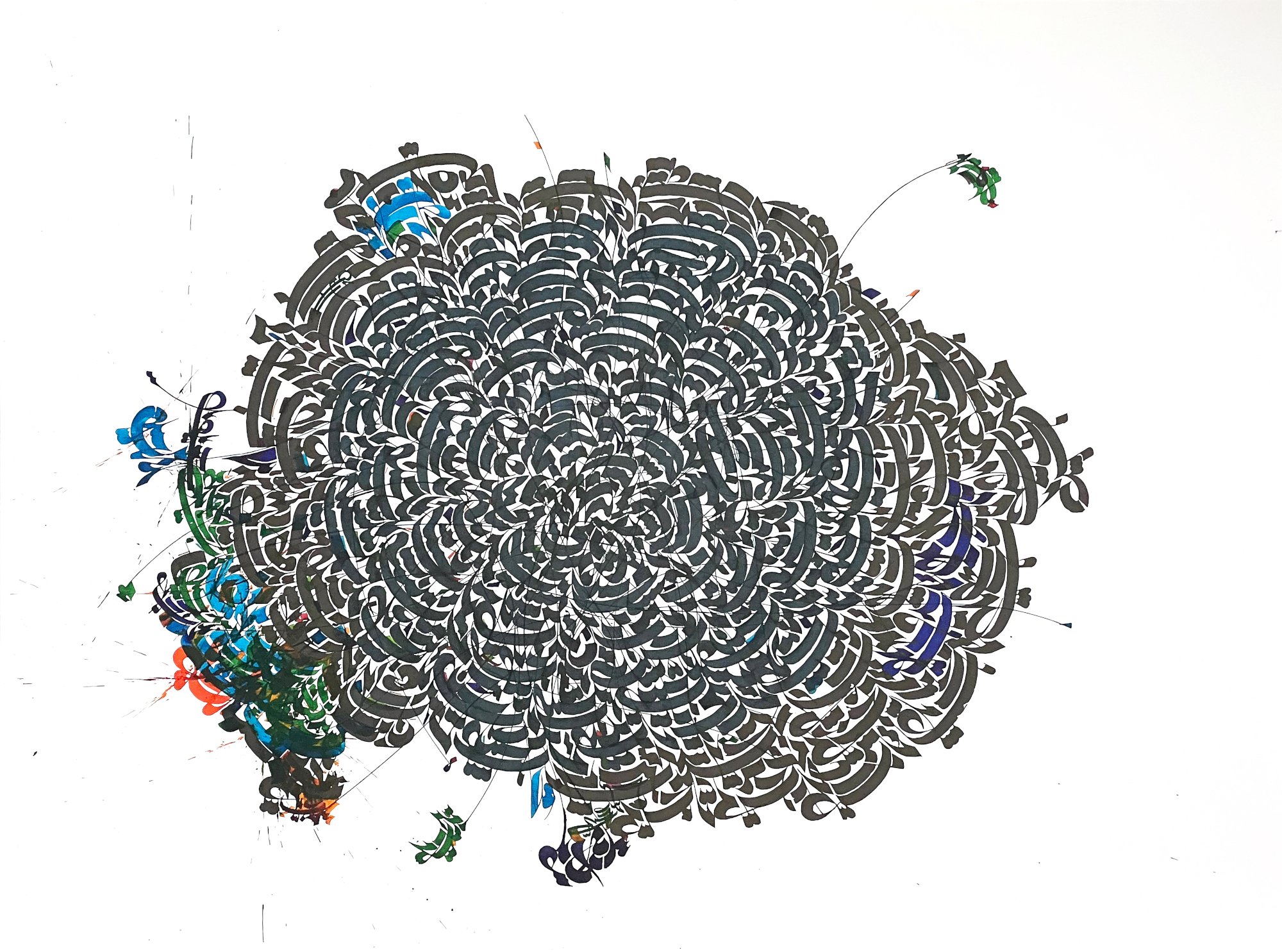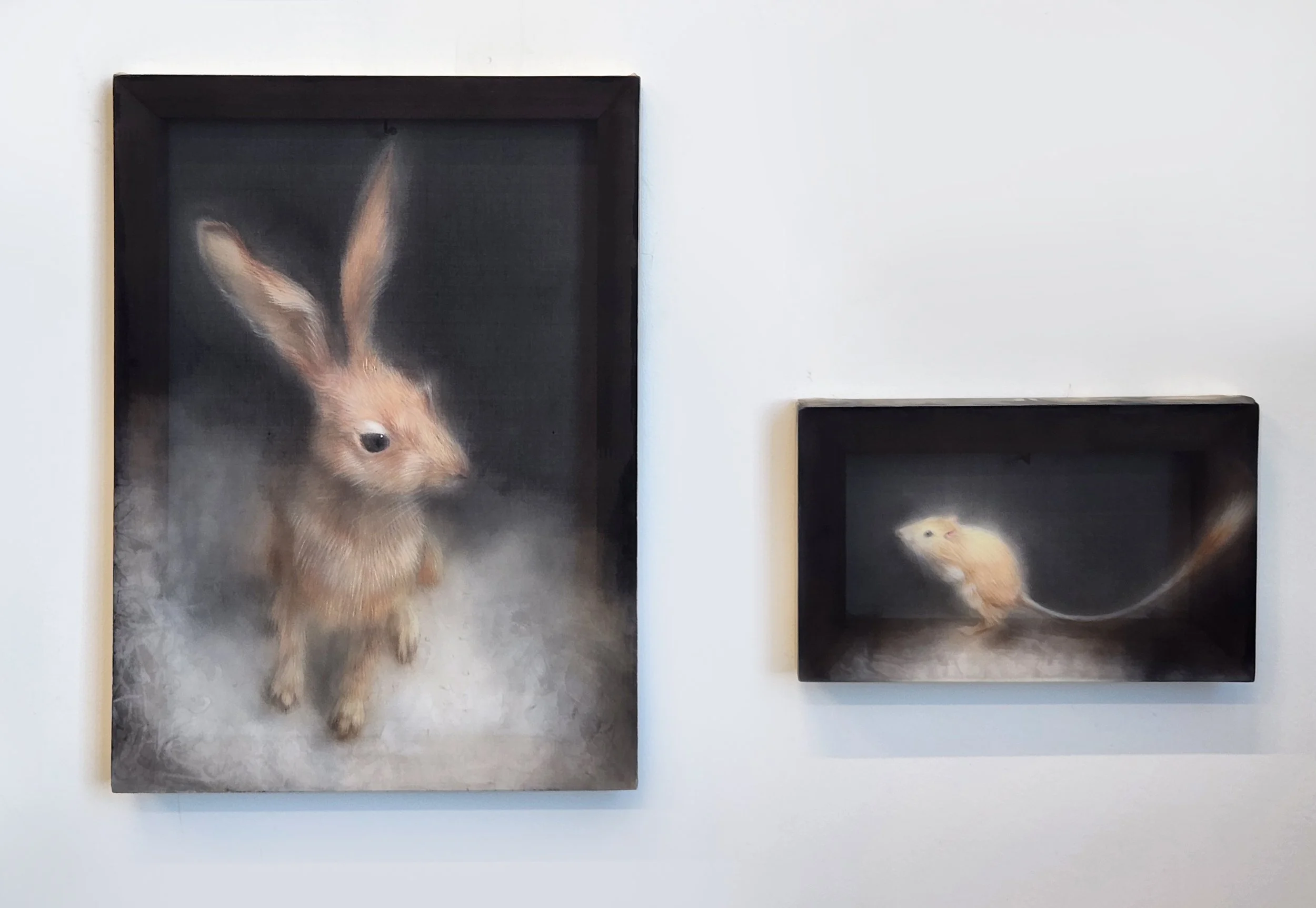10 Questions with Mariaceleste Arena
Mariaceleste Arena is a Sicilian drawer and painter who works with both traditional and digital techniques. She was born on August 3, 1993, in Messina, where she still lives and works. She created several urban regeneration works, collaborations with non-profit associations, published in various magazines and catalogs, and exhibited in various art venues, including the Museo del 900 in Messina. For her, art must always be innovative: it is, in fact, a mental process, and therefore it is always in constant transformation.
Mariaceleste Arena portrait
Limited edition art collectors’ book
INTERVIEW
First of all, introduce yourself to our readers and tell us something about you and your background. How did you start experimenting with images?
I started my training at the art school where I graduated in 2013. I have continued to experiment with art in these years, with the classic training course starting with portraits and still lifes. I gradually realized the first works in the digital and abstract genre by digitally modifying the images I create with a "glitched" effect or by experimenting with the digital collage technique.
Why are you an artist, and what is your artistic goal?
I have always had the need to express myself through my drawings, my paintings, and lately, I am evolving my concept of art, no longer placing the work I create as something to be admired only, but above all to be questioned. I make sure that what I produce is able to convey concepts and provoke debates. In recent months I have been focusing on the criticism of environmental pollution and the predominance of religion, criticizing the most representative religious. In fact, censorship in the art shouldn't exist for me. It would be like reading a book with missing chapters and no longer understanding their meaning, losing the thread of the discussion. It doesn't make any sense.
Trascendent Strenght of Philosophy © Mariaceleste Arena
At the center is the figure of the philosopher, represented as if it was a star in the center of everything, compared a little to our Sun, from which lightning bolts come out (the most visually interesting way I have found to represent this energy in a more scientific, and also through the "halo", which I wanted to insert to make him a secular "saint").
Around him were the infinite galaxies, the infinite worlds that already anticipated the theories on multiverses by a lot in his philosophy. He is placed right in the center to metaphorically indicate the engine that "moves" these universes, being the creator of this thought.
What is the main idea behind this work? What themes do you want your work to reflect on?
As I explained earlier, the concept behind my work is to re-elaborate reality in a critical and desecrating way without simply representing it. However, if I have to represent subjects that strike me, I always do it very personally, without ever sticking too much to reality. I'm starting to be critical of the concept of religion, of authority, giving vent more freely to my thoughts and my way of observing, starting from what I think about the place where I live up to the religious symbols. One of the points on which I am dwelling a lot besides these is precisely the relationship of love/hate that I feel towards my city and my island, Sicily. I think it will be one of the themes that I will often address in the future too, because I can't help but put this gap at the center of my artistic research that has always fought in me and which I can only shape through images. This criticism also consists of works that represent city symbols (such as those of the bell tower, for example) represented with heads of "arancino", a famous culinary symbol of Sicily, to satirically mock the voracity and lack of interest of my fellow villagers towards culture, art, and towards everything that is not one's "own little garden".
What is your creative process like?
Usually, as far as drawing is concerned, I start from a search for images on the web regarding a specific theme and sometimes also of my previous works. Then afterward, I rework them according to my personal style, and I begin to develop ideas, usually with drawings made with a BIC pen on my notebook. For digital art, I edit existing works with various image editing apps and software.
Where do you find inspiration?
I often find inspiration by reading books or listening to podcasts, audiobooks, documentaries on topics that interest me in a particular way and from which passages that I can find interesting in order to create new works strike me. Instagram and Pinterest also inspire me a lot, where I often help myself with different image searches to find new references.
Arancino Annunciata © Mariaceleste Arena
In front of one of Antonello's most famous works, there is an arancino, which, as in other works, obscures the face of the figure as a symbol of obscurantism originating from the insensitivity and neglect that we reserve for the beauty that surrounds us and to which very often we do not give or value nor attention.
The place of honor is reserved for belly thoughts, thoughts of everyday banal everyday life that do not allow us to see beyond and create existences other than social impositions and ways of seeing life that is not different from that of the mass.
Lion of Messina (arancino version) © Mariaceleste Arena
Are there artists you particularly look up to? Any role model you would like to follow?
In this artistic phase that I am going through, I am particularly inspired by two different artists, Renè Magritte and a local artist, Giovanni Cammarata.
As for Magritte, I was inspired by him to create the figures hidden by the arancino, replacing him with the famous apple that is always in front of his characters. For Giovanni Cammarata, I was very impressed by his elephants that seem almost humanoid, with monstrous and somewhat naive features at the same time. I have always interpreted them as war elephants fighting for the preservation of art and beauty in my city, and I wanted to pay homage to them by interpreting them in my own way.
What do you hope that the public takes away from your work?
I hope the public can somehow understand the meaning of my works and leave something impressive, stimulate artistic research, generate more questions than answers, and find them with the use of imagination.
As a young artist, what do you think of your recent experiences with art online? Did you have any success in promoting your art online?
During these months of the pandemic, therefore linked to the closure of art galleries, I was able to exhibit in some online galleries, and I must say that this opportunity fascinates me so much because I had never before had the opportunity to exhibit with artists from different parts of the world, and dealing with artistic genres that are difficult to see in my part of the world. The virtual annihilates all possible barriers, and in my opinion, it is an excellent method to spread art and culture, even if obviously nothing can replace the experience of the "real" contact with the works. I must say that the exhibitions have received several appreciations, I am very satisfied.
Distruction of the Art © Mariaceleste Arena
The elephants of Cammarata, symbols of Art in Messina, run away from the city of Messina (symbolized below by the Madonna dello Stretto in arancino version), under a shower of meteorites and an eclipse, which obscures everything. These are the symbols of ignorance, abandonment, and insensitivity.
What are your main career goals? How do you see your career evolving in the future?
I hope to discover and experiment, above all, new artistic techniques and collaborate with other artists, which is something I have been interested in doing for a long time. I would like, in particular, to have new possibilities to experiment with digital art, NFTs, video mapping, designing textures for clothing, perhaps inspired by some of my works.
Lastly, What are you working on now, and what are your plans for the future? Anything exciting you can tell us about?
In the future, I would like to start creating street art and murals again, especially in my area. Urban redevelopment must begin with art and with young people.






















